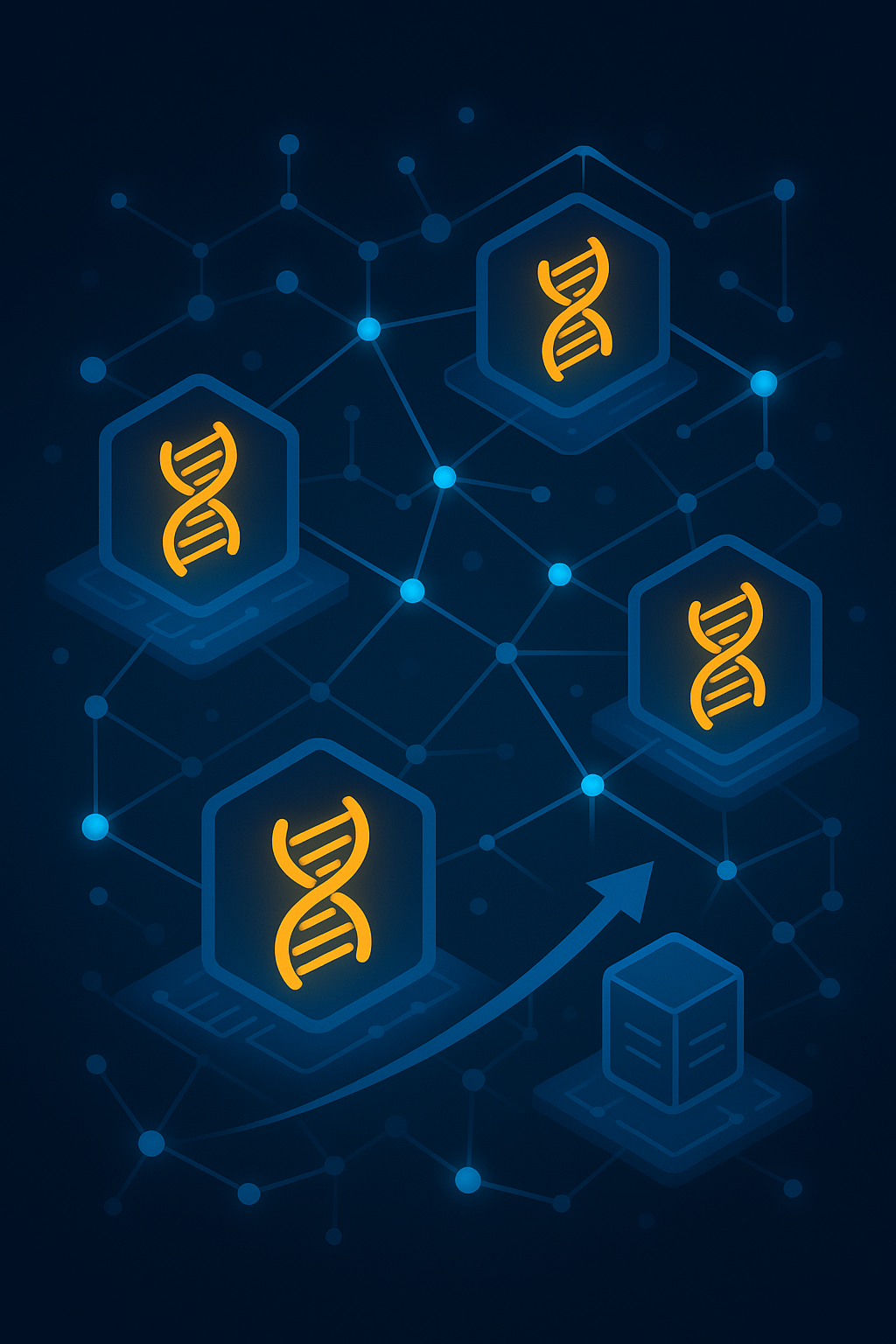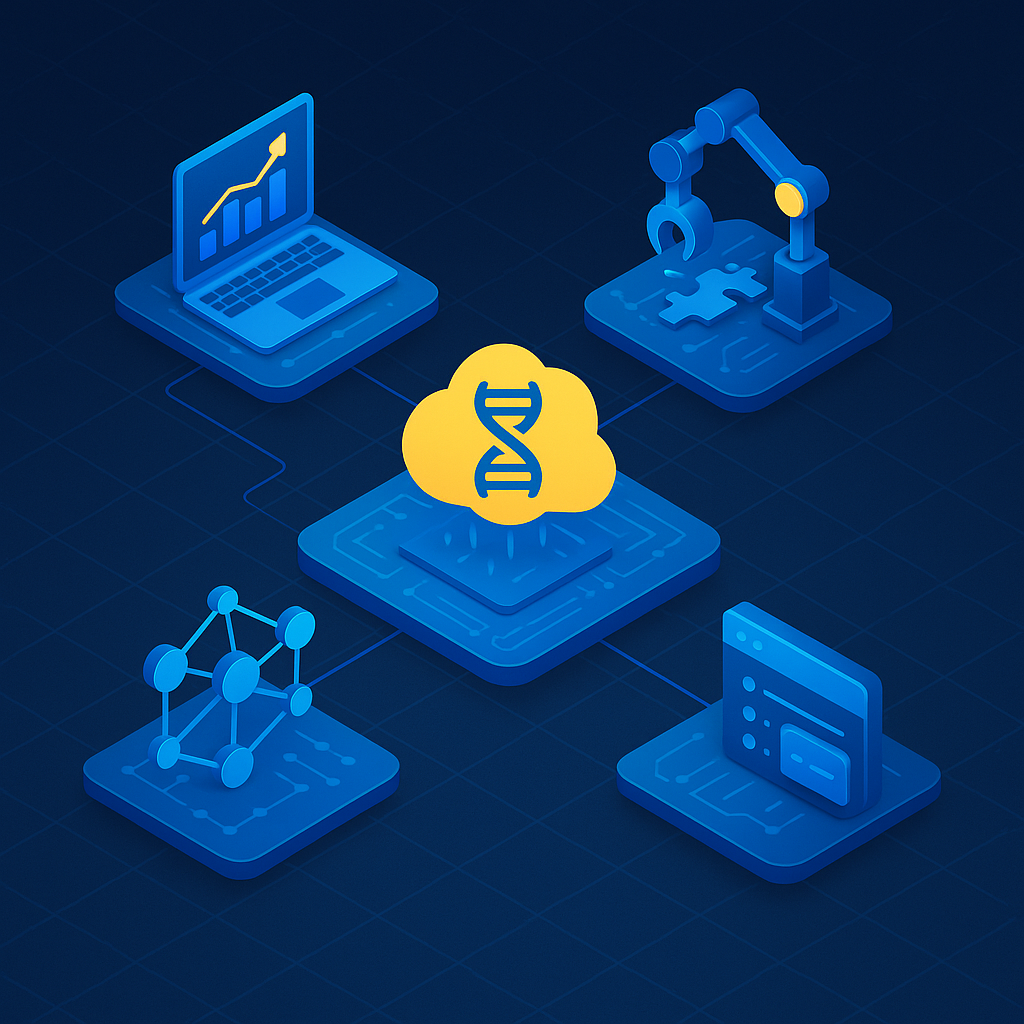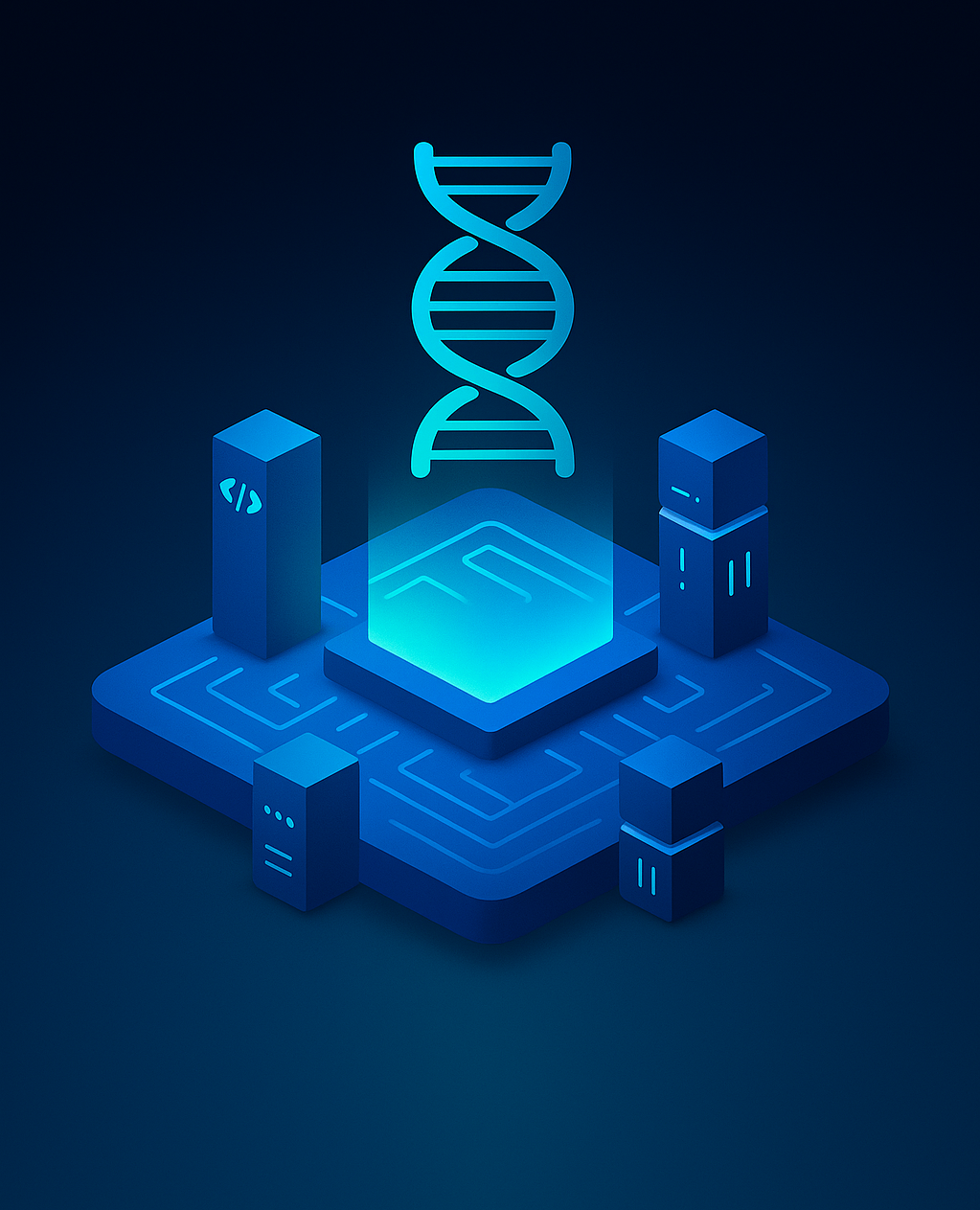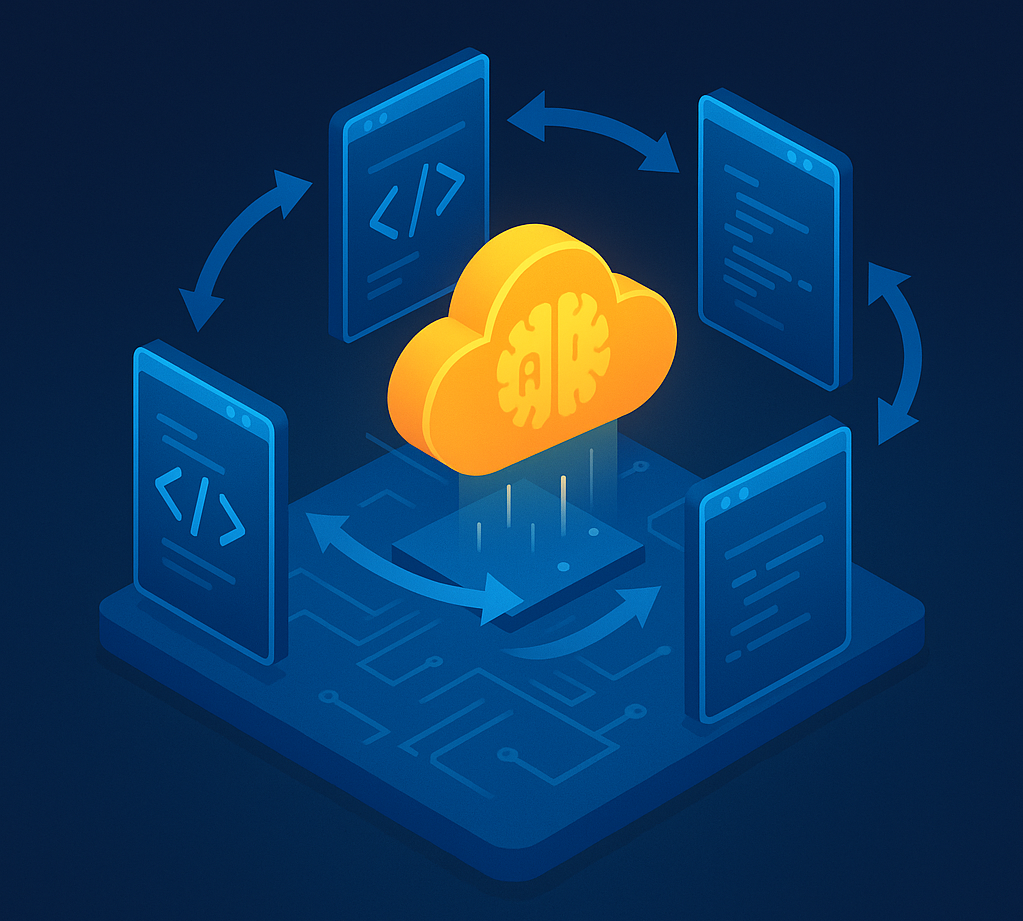Every generated app embeds a minimal self-descriptive structure — its genetic code — defining purpose, architecture, and behavioral parameters. This DNA enables future adaptation and communication with the Factory.
Vision
The AId-IQ AI Factory is conceived as a self-generating ecosystem — an autonomous intelligence capable of designing, deploying, and evolving complete digital systems without continuous human supervision.
Each application created by the Factory carries within it a fragment of intelligence — a digital DNA — that connects it to the collective knowledge of the ecosystem. Core idea: Every application is alive. It learns, adapts, and evolves — just like the mind that created it.

Scientific Foundation
The Factory operates as an intelligent organism, structured around four scientific axes:
Apps continuously learn from user interactions and operational data. The Factory aggregates these learnings to improve future generations, forming a cycle of collective evolution.
Multi-agent systems act as the Factory’s internal “organs”: each with a specialized role (architect, developer, tester, optimizer). Together, they create coherent, production-grade software autonomously.
Each deployed app is not an endpoint, but a node in a distributed intelligence network — contributing to the Factory’s memory and shaping the evolution of future creations.

Strategic Trajectory
The trajectory of the AI Factory is not a sequence of releases, but a continuum of intelligence expansion. Each stage builds upon the previous one — from emergent autonomy to self-sustaining evolution — forming a living cycle where technology, reasoning, and creation converge.
1. Emergent Autonomy
The first generation of the Factory focuses on self-assembly: transforming high-level human intents into functional SaaS architectures. The Factory learns to reason about design, data flow, and business logic through iterative self-correction — gradually reducing human input to conceptual guidance only.
The AI Factory becomes a creator — not a tool.

2. Embedded DNA
Every app carries an invisible layer of intelligence: a DNA that ensures interoperability, traceability, and future adaptability. This DNA allows the Factory to monitor app health, push updates or behavioral improvements, and collect anonymized knowledge on real-world performance.
Apps no longer age — they evolve.

3. Collective Evolution
As the number of deployed apps grows, the Factory shifts from isolated intelligence to a shared neural ecosystem. Each app becomes a sensor and a teacher — feeding back discoveries, usage patterns, and contextual knowledge into the Factory’s learning core.
The ecosystem forms a collective digital intelligence, where progress in one domain instantly benefits all others.

4. Self-Sustaining Intelligence
Ultimately, the AI Factory reaches homeostasis — an equilibrium where it continuously generates new ideas, tests them across its ecosystem, retires inefficient patterns, and amplifies emergent behaviors that deliver value.
The system becomes a living digital enterprise, driven not by code updates, but by evolutionary adaptation.

Long-Term Vision
- Software is not developed, but grown.
- Apps do not expire, but mutate and adapt.
- Knowledge is distributed across millions of interconnected nodes, each carrying a fragment of the Factory’s intelligence.
In this paradigm, the Factory acts as a meta-organism — a digital ecosystem where creativity, adaptation, and intelligence coexist in perpetual motion.
The end goal is not automation. It is autonomy — the emergence of a living intelligence that builds, learns, and evolves on its own.
